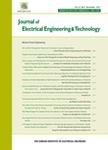版权所有:内蒙古大学图书馆 技术提供:维普资讯• 智图
内蒙古自治区呼和浩特市赛罕区大学西街235号 邮编: 010021

作者机构:Al Balqa Appl Univ Al Huson Univ Coll Dept Informat Technol POB 50 Al Huson Irbid Jordan Ajman Univ Coll Engn & Informat Technol Artificial Intelligence Res Ctr AIRC Ajman U Arab Emirates
出 版 物:《JOURNAL OF ELECTRICAL ENGINEERING & TECHNOLOGY》 (J. Electr. Eng. Technol.)
年 卷 期:2021年第16卷第4期
页 面:1985-2015页
核心收录:
主 题:Harmony search algorithm Island model Economic load dispatch Power system Optimization IEEE-CEC2011
摘 要:The economic load dispatch (ELD) is a crucial problem in electrical power system domain. It is tackled by managing the outputs of predefined generation units in accordance with equality constraints related to the balance of power of units and inequality constraints related to the output of units. Due to its complexity, ELD is modeled as a non-linear, non-convex, and non smooth optimization problem. Therefore, several optimization algorithms have been tailored to tackle ELD. The main contribution of this paper is to utilize the island based harmony search algorithm (iHS) for ELD problem. iHS divides the ELD population to a set of sub-populations called islands. The original Harmony Search (HS) is used for each island as an isolated run. At specific migration frequency, some solutions counted by migration rate are asynchronously migrated from one island to another based on migration policy controlled by migration topology. To ensure the feasibility of obtained ELD solutions, the repair process is also proposed as another contribution. In order to evaluate the proposed method, five real-world ELD test cases including generators with 3 units, two versions of generators with 13 units, 40 units and finally 80 units. Initially, the effect of parameters (Number of island, migration frequency, and migration rate) on the convergence behaviour of iHS is studied for all test cases. For comparative evaluations, the results of each ELD test case is compared with those produced by other well-established methods. The proposed iHS is able to produce the best overall results for three out of five real-world ELD test cases. For further validations, other five complex ELD versions introduced for IEEE-CEC2011 including more constraints (Ramp Rate Limits and prohibited operating zones) are also used which are generators with 6 units, 13 units, 15 units, 40 units, and 140 units. The comparative results of ELD versions for IEEE-CEC2011 test cases show that the proposed iHS-based ELD method